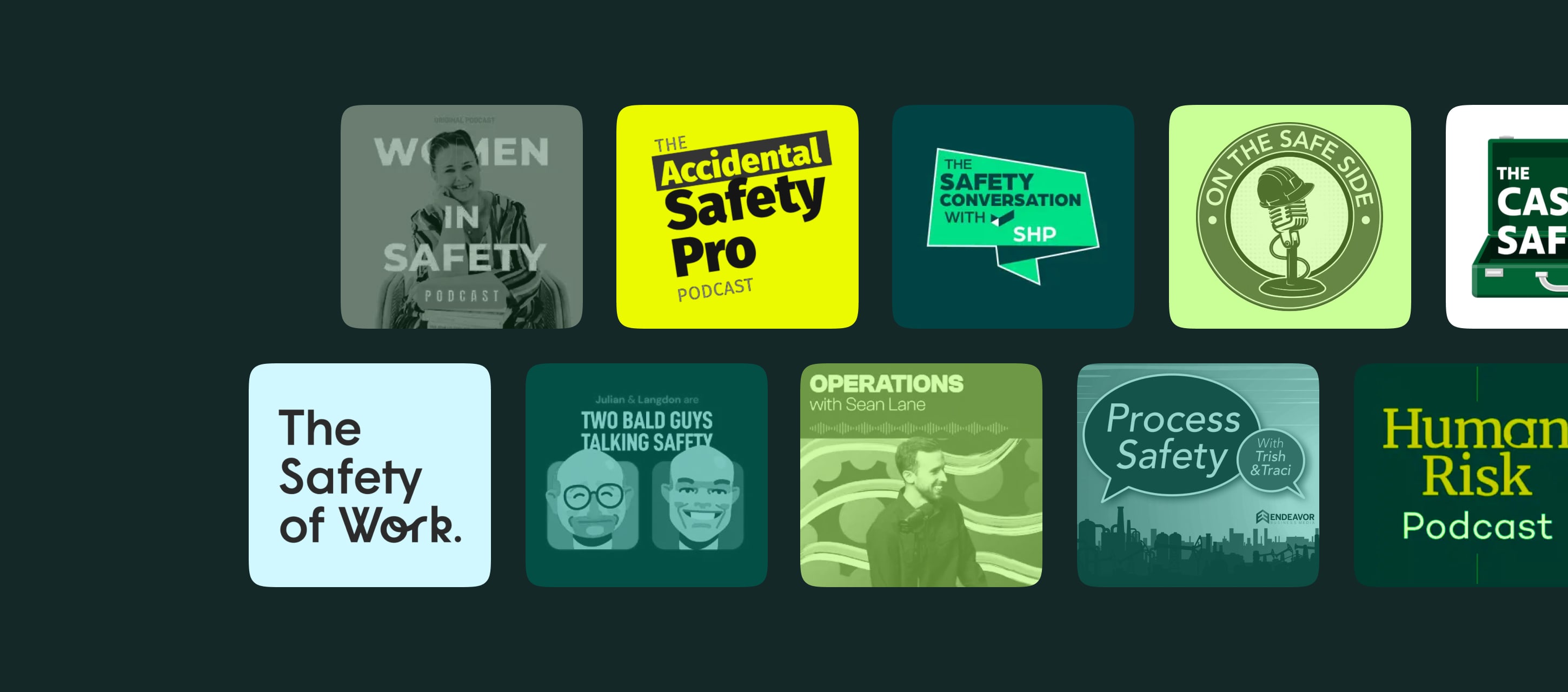Reports and safety are cousins.
Strong reporting upholds your company’s commitment to a safe, healthy work environment for your people. It also provides the information you need to reduce risk and comply with government and industry regulations.
And while comprehensive documentation takes time, smart strategies and dedicated safety management system software can help you speed up the safety reporting process.
Contents:
Defining the Workplace Safety Report
A safety report is a standardized document used to record safety and health hazards, near misses and incidents on a job site.
Your company can use these records to analyze and improve your safety performance. Safety reports allow you to identify risk factors, see how well your current safety measures work, and plan and implement targeted improvements for prevention.
Benefits of Safety Reporting
By reporting incidents and near misses, employees contribute to the early detection of workplace hazards. As a result, your company can address minor problems before they escalate, potentially saving lives while reducing the cost and lost time associated with injuries. By understanding the root cause of incidents, you can avoid similar occurrences in the future.
Safety reports provide valuable data for organizations to continuously improve their safety programs. Analyzing trends and patterns in incident reports enables companies to improve overall workplace safety.
Companies in many industries have to fulfill a legal reporting obligation. Failure to comply with reporting regulations can result in fines and other consequences. Comprehensive reporting ensures safety compliance with local and national safety regulations for businesses across sectors.
Exploring the Components of a Safety Report
A well-structured safety report contains several key elements.
Incident Details
This section provides a thorough description of the incident, including the date, time and location. It outlines what happened, who was involved and immediate actions taken.
Injury or Illness Information
For injuries or illnesses, the safety report should detail the nature and extent of the injuries, medical treatment provided and potential long-term consequences.
You should also document near miss incidents. These events could have but did not cause harm. Identifying near misses supports early identification of hazards before someone gets hurt.
Witness Statements
Accounts from people who witnessed the incident provide additional perspectives. These details give your report depth and can potentially inform the resulting investigation.
Root Cause Analysis
Detecting the root cause of the safety incident allows your company to remove this risk. The safety report should analyze underlying factors that contributed to the incident. Many safety occurrences have more than one root cause.
Corrective Actions
Documenting the actions you take in response to the incident demonstrates your organization’s commitment to safety. This section should also outline the steps taken to prevent similar incidents in the future.
Based on the incident analysis, safety reports often include recommendations for improving safety protocols or employee safety training.
Tools to Speed Up the Safety Reporting Process
You can expedite the creation of safety reports for fast interventions that limit future incidents. We suggest you start with these strategies for speed.
User-Friendly Reporting Systems
Easy-to-use digital systems encourage employees to submit thorough, prompt reports. Intuitive platforms remove barriers to reporting, simplifying the process and streamlining the flow of this critical safety data.
And having digital checklists to fill out (e.g. a hazard identification checklist or LOTO checklist) can save your field crews much time on inspections.
Mobile safety reporting apps are a smart selection, especially when you have multiple locations or job sites. For example, in Fluix, a safety management app for field teams, employees can send safety reports straight from their digital devices in real-time. They can also add photos and videos to illustrate the incident or hazard in question.
Comprehensive Training and Awareness Programs
Regular education sessions and safety awareness programs empower employees to recognize and report incidents promptly. Well-informed workers are more likely to engage in the reporting process, improving safety for everyone on site.
Introducing incentive programs can motivate teams to prioritize timely, accurate safety reports. Recognition, rewards and other positive reinforcements contribute to a solid safety culture within your organization.
Clear Reporting Protocols
Provide clear, concise instructions so employees understand exactly how to write and submit an official safety report or perform a safety audit. Create a protocol for the entire process along with a template of a comprehensive safety report that they can use as a model.
See How Much Paperwork Is Really Costing You
Designating Safety Reporting Responsibilities
Ideally, team members across all levels of the company have important roles in the safety reporting process.
Frontline employees are often the first to witness incidents and identify potential hazards. They must promptly notify supervisors and designated safety personnel about incidents, dangerous conditions and near misses.
Supervisors and managers oversee the reporting process within their departments. They ensure that their workers know how to report incidents and receive their safety documentation. They also participate in the investigation and help plan and implement corrective actions, for example, add weekly safety walks.
Your organization may appoint a safety officer or committee to oversee the overall safety management system. The designated person or team reviews safety reports, manages investigations and spearheads measures to ensure safe work environment.
Cases involving injuries or illnesses may involve the human resources department. These professionals ensure compliance with legal requirements and coordinate workers’ compensation claims when necessary.
The leadership team of an organization is ultimately responsible for creating a culture of safety. They play a vital role in supporting safety initiatives, allocating resources for improvements and committing to comprehensive employee protection from injury and illness.
FAQs About Safety Reports
1. What is the difference between an incident and a near miss in a safety report?
An incident is an unplanned event that results in harm or damage. A near miss is an incident that could have caused harm but did not.
2. Are safety reports confidential?
Safety reports are typically treated with confidentiality to encourage open reporting. However, information may be shared with relevant parties involved in investigating and addressing the reported incidents.
3. Can employees report safety concerns anonymously?
Many organizations provide anonymous reporting options. Anonymous reporting can lead to more candid and honest disclosure of potential hazards.
Fast, Accurate Safety Reporting With Fluix
Fluix is a workflow automation tool that simplifies your processes, including safety reporting. With our solutions, you can fill out digital safety reports and submit them from mobile devices, whether you’re in the field or in the office.
Additionally, we provide automated workflows for review and approval processes, ensuring that safety reports are promptly reviewed by the relevant stakeholders and action can be taken fast if necessary. By centralizing the entire safety reporting process in one digital platform, Fluix helps companies streamline their operations, improve efficiency, and enhance overall safety compliance.






